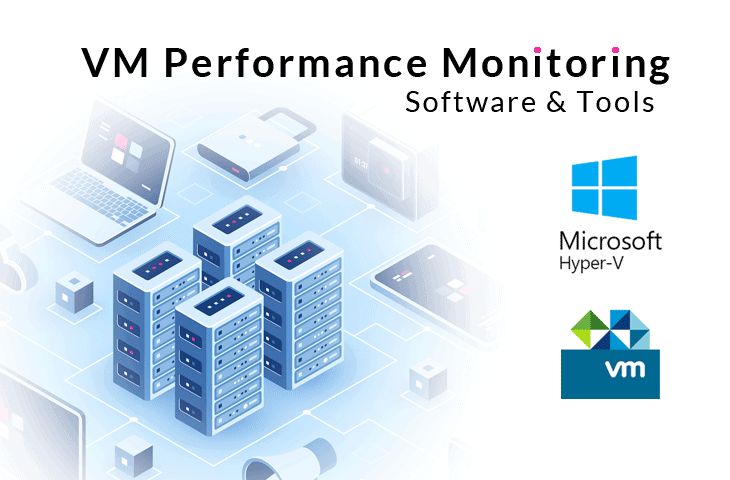
Introduction
Windows Performance Monitoring is essential for maintaining system health, diagnosing issues, and ensuring optimal performance. This article provides a detailed overview of the tools and techniques available for monitoring the performance of Windows operating systems, covering built-in utilities, third-party software, and best practices for effective monitoring.
1. Importance of Performance Monitoring
Performance monitoring is crucial for several reasons:
- Preventative Maintenance: Regular monitoring helps identify potential issues before they become critical.
- Troubleshooting: It aids in diagnosing problems when they occur.
- Optimization: Monitoring allows for fine-tuning of system resources for better performance.
- Capacity Planning: Helps in planning for future upgrades and resource allocation.
2. Key Performance Metrics
Understanding key performance metrics is essential for effective monitoring:
- CPU Usage: Indicates how much of the CPU’s capacity is being used.
- Memory Usage: Shows the amount of RAM being utilized.
- Disk Activity: Measures read/write operations on the disk.
- Network Activity: Monitors data sent and received over the network.
- Process Monitoring: Keeps track of active processes and their resource consumption.
3. Built-in Windows Monitoring Tools
Windows offers several built-in tools for performance monitoring:
a. Task Manager
- Usage: Quick overview of system performance.
- Features: Displays CPU, memory, disk, and network usage.
- Access: Ctrl+Shift+Esc or right-click the taskbar.
b. Performance Monitor (PerfMon)
- Usage: Detailed performance tracking and logging.
- Features: Customizable data collection, real-time monitoring, performance logs.
- Access: Run
perfmonfrom the Run dialog or search in the Start menu.
c. Resource Monitor
- Usage: In-depth analysis of system resource usage.
- Features: Detailed graphs and statistics for CPU, memory, disk, and network.
- Access: Access via Task Manager or run
resmonfrom the Run dialog.
d. Event Viewer
- Usage: Logs system events, errors, and warnings.
- Features: Detailed event logs, filtering, and searching capabilities.
- Access: Run
eventvwrfrom the Run dialog.
4. Advanced Built-in Tools
a. Windows Performance Recorder (WPR) and Windows Performance Analyzer (WPA)
- Usage: Detailed performance recording and analysis.
- Features: In-depth analysis of system behavior and performance bottlenecks.
- Access: Part of the Windows Assessment and Deployment Kit (ADK).
b. System Information (MSInfo32)
- Usage: Comprehensive system overview.
- Features: Hardware resources, components, and software environment information.
- Access: Run
msinfo32from the Run dialog.
5. Third-Party Performance Monitoring Tools
While built-in tools are powerful, third-party tools can offer additional features:
a. SolarWinds
- Features: Comprehensive network and system monitoring, alerting, and reporting.
- Use Cases: Ideal for enterprise environments.
b. Paessler PRTG Network Monitor
- Features: Extensive monitoring capabilities for network and system performance.
- Use Cases: Suitable for businesses of all sizes.
c. ManageEngine OpManager
- Features: Real-time network, server, and virtualization monitoring.
- Use Cases: Good for large-scale IT environments.
d. HWMonitor
- Features: Hardware monitoring tool focusing on temperature, voltage, and fan speed.
- Use Cases: Useful for hardware diagnostics.
6. Best Practices for Performance Monitoring
a. Regular Monitoring
- Schedule regular monitoring sessions to stay ahead of potential issues.
b. Baseline Establishment
- Establish performance baselines to compare against normal operation.
c. Alert Configuration
- Set up alerts for critical metrics to get notified of potential problems.
d. Log Analysis
- Regularly analyze logs to identify trends and recurring issues.
e. Resource Optimization
- Use monitoring data to optimize resource allocation and system configurations.
f. Documentation
- Keep detailed documentation of monitoring setups and findings for future reference.
7. Troubleshooting Common Performance Issues
a. High CPU Usage
- Identify and terminate resource-hungry processes.
- Check for malware or unnecessary background applications.
b. Memory Leaks
- Use tools like Resource Monitor to identify memory leaks.
- Restart the affected applications or services.
c. Disk Bottlenecks
- Monitor disk activity using Performance Monitor.
- Defragment the disk or upgrade to faster storage solutions like SSDs.
d. Network Latency
- Use built-in tools or third-party software to monitor network traffic.
- Check for network congestion or faulty network hardware.
Conclusion
Effective performance monitoring is key to maintaining a healthy Windows environment. By leveraging both built-in and third-party tools, understanding key performance metrics, and following best practices, you can ensure your Windows systems run efficiently and reliably. Regular monitoring, proactive troubleshooting, and optimization based on monitoring data will lead to a more stable and performant system.

